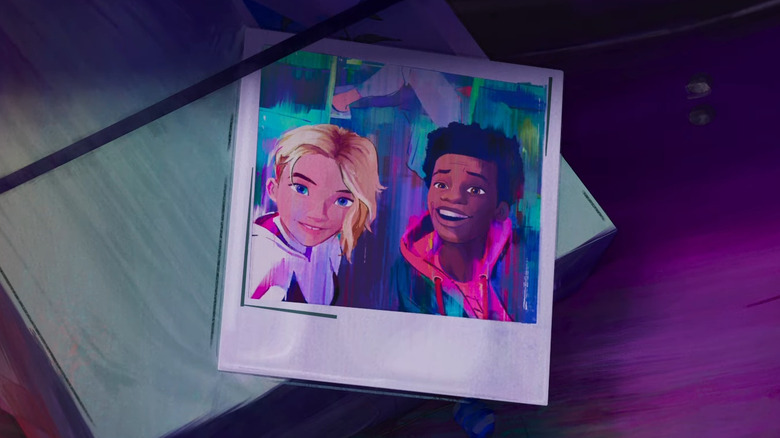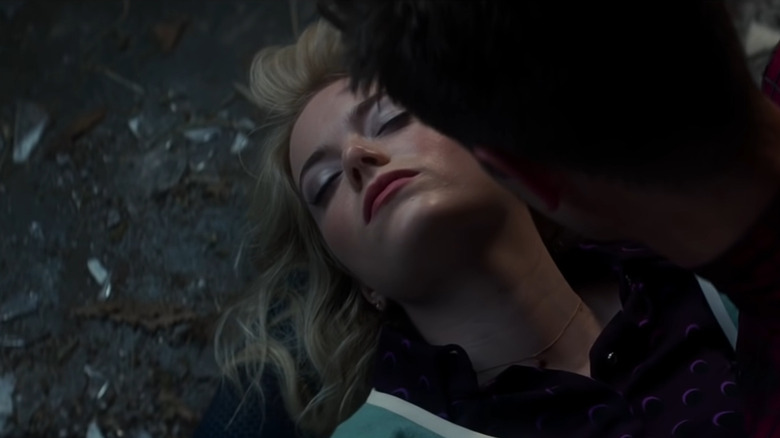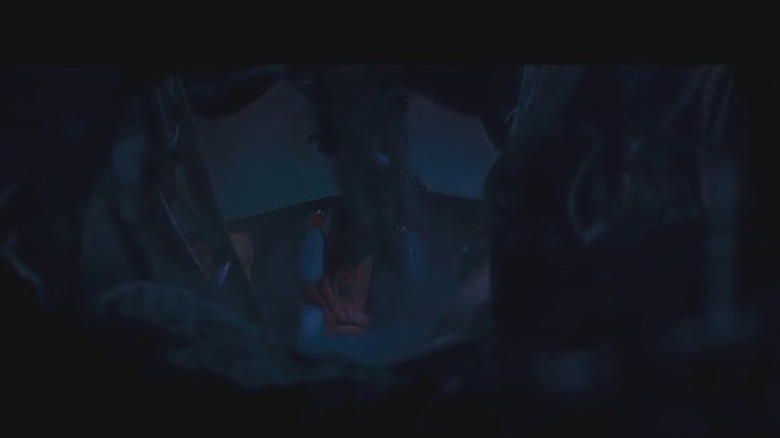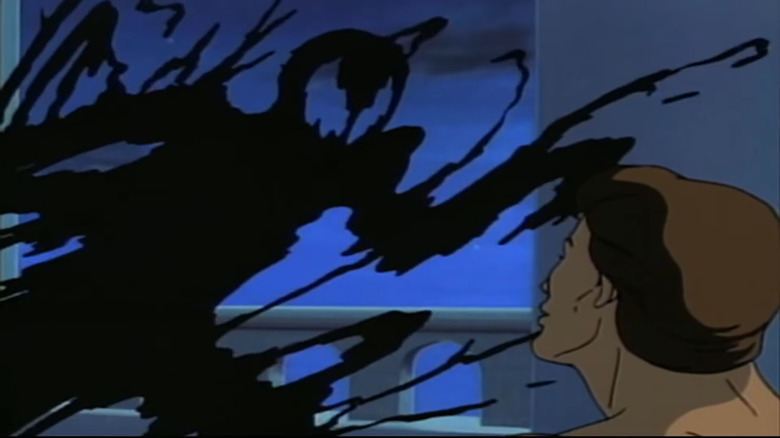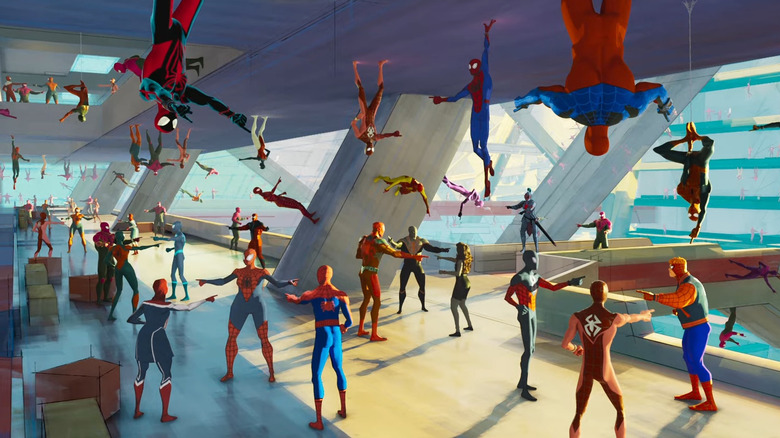Spider-Man: Across The Spider-Verse: Every Canon Event Shown In The Film
"Spider-Man: Across the Spider-Verse" redefines what Marvel fans should expect from multiverse adventures in terms of creativity, story, and style. But more than that, the film builds upon established multiversal lore to introduce new, potentially world-breaking mechanics such as "canon events."
According to the morally dubious Miguel O'Hara (the Spider-Man of 2099, voiced by Oscar Isaac), a canon event is a moment in a Spider-Person's life that — if altered or avoided — will cause the total destruction of the universe. It seems as though these identical events are what tie Spidey-specific universes together in the titular Spider-Verse, and the deviation of enough universes could lead to the dissolution of it as a whole.
There are a large number of canon events confirmed throughout the film. Some appear in quick flashes or short lines of dialogue, while others push the story forward in ways no audience member could expect. We tracked down each and every canon event revealed so far so that you can see just how closely this universe is connected while we all await the eventual release of "Beyond the Spider-Verse" in 2024.
Spidey's love life is written in the stars (or... web?)
As we see for a split second in Miguel's purportedly infallible web of Spider-Histories, every variant of Spider-Man falls madly in love at some point during their time in costume. In fact, if the imagery shown is to be taken literally, each Spider-Person recreates the iconic upside-down kiss popularized by Sam Raimi's original 2002 "Spider-Man" film. Ironically, an early scene between Miles Morales (Shameik Moore) and Gwen Stacy (Hailee Steinfeld) mirrors this Spidey-specific trope during a moment of disconnection, perhaps foreshadowing Miles' existence outside Miguel's webbed order.
Once those Spider-Folk inside the canon finds their own "jackpot," they all apparently get married — one of the webs shows Peter B. Parker (Jake Johnson) standing at the alter with his Mary Jane Watson (Melissa Sturm), dressed happily in wedding attire. It's possible that this is also a subtle nod to the "Renew Your Vows" Marvel Comics storyline, in which a version of Mayday Parker appears.
Though it isn't explicitly shown by Miguel during the sequence in the Spider-Society, Gwen does tell Miles during their romantically charged hang-out that in every other universe, Gwen Stacy falls for Spider-Man. This could very well be another canon event. If it is, however, it could spell danger for Gwens across the multiverse.
Death(s) in the Family
Just after seemingly alluding to the canon event of Gwen Stacy falling for Spider-Man, Gwen reveals that in each of these universes, her story ends in tragedy. Audiences know this too well, having not only seen panels from the comic "The Night That Gwen Stacy Died," but having witnessed her death in life-action at the climax of 2015's "The Amazing Spider-Man 2." It is unknown how the Spider-Verse would reconcile such a canon event when the Spider in question is Gwen Stacy herself.
The film's central canon event is the impending death of soon-to-be Police Captain Jefferson Davis (Brian Tyree Henry). Referred to by Miguel as "event ASM-90," a police captain close to Spider-Man must sacrifice their life to save a child from falling rubble during a battle with the hero's archnemesis. This is exactly what happened to Captain Stacy in the featured comic panels, was supposed to happen to Captain Singh on Earth-50101, and will supposedly happen in "Beyond the Spider-Verse" to Miles' father during a battle with The Spot (Jason Schwartzman). Interestingly enough, the clip from "The Amazing Spider-Man" doesn't exactly fit within these parameters, which could be a clue that Miguel's logic isn't as sound as he believes. After all, Miles' father doesn't die in the Earth-1610 comics universe — though he is killed on Earth-1048, wherein the events of "Spider-Man PS4" take place.
Then again, we've always known on some level that a canon event doesn't need to be exactly the same across all multiversal occurrences — such is the case with the death of Uncle Ben. Though Ben Parker is commonly the loved one closest to Spider-Man who tragically dies early in his journey, Ben's role has been filled by numerous different characters, including Aaron Davis ("Into The Spider-Verse," Earth-1610), May Parker ("No Way Home," Earth-199999), and even Peter Parker himself ("Across the Spider-Verse," Earth-65).
Classic comic book moments come to life
Many classic comic book moments are revealed to be canon events, one being the widely recognizable sequence from "The Amazing Spider-Man" #33 (titled "If This Be My Destiny") wherein Spider-Man gathers every last morsel of his superhuman resolve to lift a massive piece of machinery above his head so that he can save Aunt May. Jessica Drew (Issa Rae) can be seen living out this canon event very briefly, and it was once even recreated in live-action for the film "Spider-Man: Homecoming."
Perhaps the most important moment in any Spider-Person's life is when they are bitten by a radioactive spider, which the film also confirms is a canon event. While this could almost be assumed outright, it's a fascinating specification from the film considering that, in the comics, Miguel is never bitten by a spider. His gifts — including his unusual fangs and claws — were forced upon him by the corrupt corporation Alchemax via forced genetic recoding. In other words, Miguel may secretly be every bit as anomalous as he claims Miles is.
Spidey's growing pains are multiversal
As we see Peter B. Parker's wedding and Jessica Drew's feat of strength, we also get a quick shot of Hobie Brown (Daniel Kaluuya) — aka Spider-Punk — walking away from his costume, having abandoned it in a trash can. This is a clear nod to the story "Spider-Man No More!," which sees Spider-Man reject his superhero identity and attempt to return to a normal life. This canon event inspired another beloved "Spider-Man" sequel, Sam Raimi's "Spider-Man 2."
The Venom Saga — also semi-coincidentally the basis of Raimi's "Spider-Man 3" — is confirmed to be a canon event as well, with Miguel's web displaying several different Spider-People being taken over by the sinister alien goo-suit. This creates another potential problem for his theory, however, as "Across the Spider-Verse" seemingly confirms that Earth-688 (aka Sony's Venomverse) is connected to this web. In this reality, the Venom symbiote never attaches itself to Peter Parker, or any variant of Spider-Man for that matter, instead finding its ideal host, Eddie Brock (Tom Hardy), shortly after landing on Earth.
Other possible canon events
Though we've covered all the canon events depicted or mentioned within "Spider-Man: Across the Spider-Verse," we believe a few Spidey moments could be potentially classified as such in the near future. The clearest of these would be the occurrence of a chance multiversal encounter which, as of "Spider-Man: No Way Home," every Spider-Person has seemingly experienced at some point or another. If that doesn't constitute a canon event, we don't know what does.
Similar to the feat of strength in "If This Be My Destiny," another canon event could be a Spider-Person using bundles of their own webs to hold onto something and/or hold it together. The Spider-Man of Earth-96283 ("Spider-Man 2") did this to stop a runaway train, while the Spider-Man of Earth-199999 ("Spider-Man: Homecoming") did it to stop a ferry from breaking in two.
Lastly, as jokingly acknowledged by Ned Leeds (Jacob Batalon) in "No Way Home," most Spider-People are unfortunately betrayed by a close friend who turns into a supervillain. This was true for the variants on Earth-65 (Peter Parker, as seen in the "Spider-Verse" films), Earth-96283 (Harry Osborn in "Spider-Man 3"), and Earth-120703 (Harry Osborn, again, in "The Amazing Spider-Man 2"). Given how important canon events seem to be to the future of the multiverse, we'll likely learn much more about them when "Spider-Man: Beyond the Spider-Verse" swings into theaters next year.
